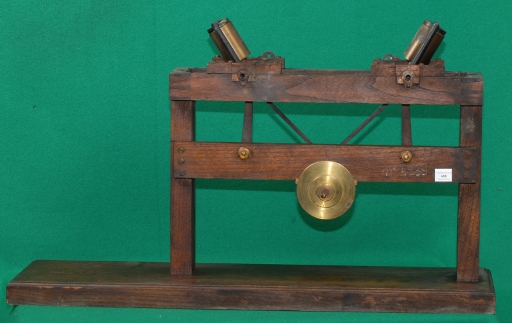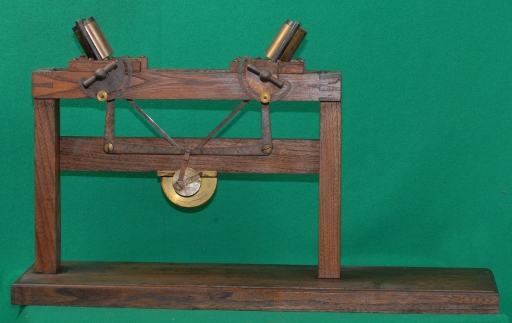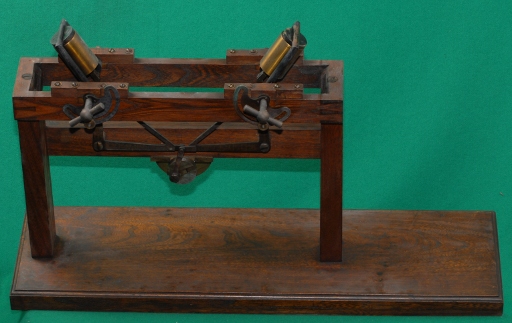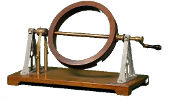» Bjerknes apparatus (0688)
Immagini



DESCRIPTION
Exhibit 688 is an experimental apparatus constructed by Carl Anton Bjerknes (1825-1903), a mathematics professor at the University of Oslo, to demonstrate his attempt to explain the electrodynamics of J. C. Maxwell and gravitation in terms of vibrating spheres in a liquid. In fact, in a liquid two vibrating spheres attact if in phase and repulse if out of phase.
In collaboration with his son Vilhelm,(1862-1951), who continued this research, he constructed a series of instruments in which phenomena of electricity and magnetism were illustrated and reproduced by spheres and disks with membranes excited in rythmic vibrations in a bath of viscous fluid. These demonstrations were presented at the International Exposition of Electricity in Paris in 1881 where they solicited much interest in the scientific world.
The vibration of the membranes was obtained oscillating a piston in a cylinder, that was attached to the spheres or disks with flexible tubes. Our instrument, visible in photo, is the part that produced the vibrations.
A pulley moved the pistons inside the two cylinders: the volume variations were obtained by inclining the two cylinders at different angles. The rubber tubes that transported the air to the membranes is missing.
BIBLIOGRAPHY
- [1] Il Nuovo Cimento (1901-1910) Volume 15, Number 1, 429-439, DOI: 10.1007/BF02712949 Gianfranceschi Sui Campi idrodinamici di Bjerknes
- [2] URL [ http://en.wikipedia.org/wiki/Vilhelm_Bjerknes ]
- [3] Bjerknes, V. (1862-1951). Die Kraftfelder, Braunschweig, F. Vieweg und Sohn, 1909.
Dati Catalografici
| Data di costruzione: | 1927 |
|---|---|
| Data di carico: | 1927-03-23 |
| Nr. Inventario: | 4239 (Generale dal 1874) |
| Costruttore: | Costruito in Istituto |
| Materiale: | legno, ottone |
| Dimensioni: | Base: 74 cm x 21 cm; Altezza complessiva: 38 cm |
| Conservazione: | cattivo |
